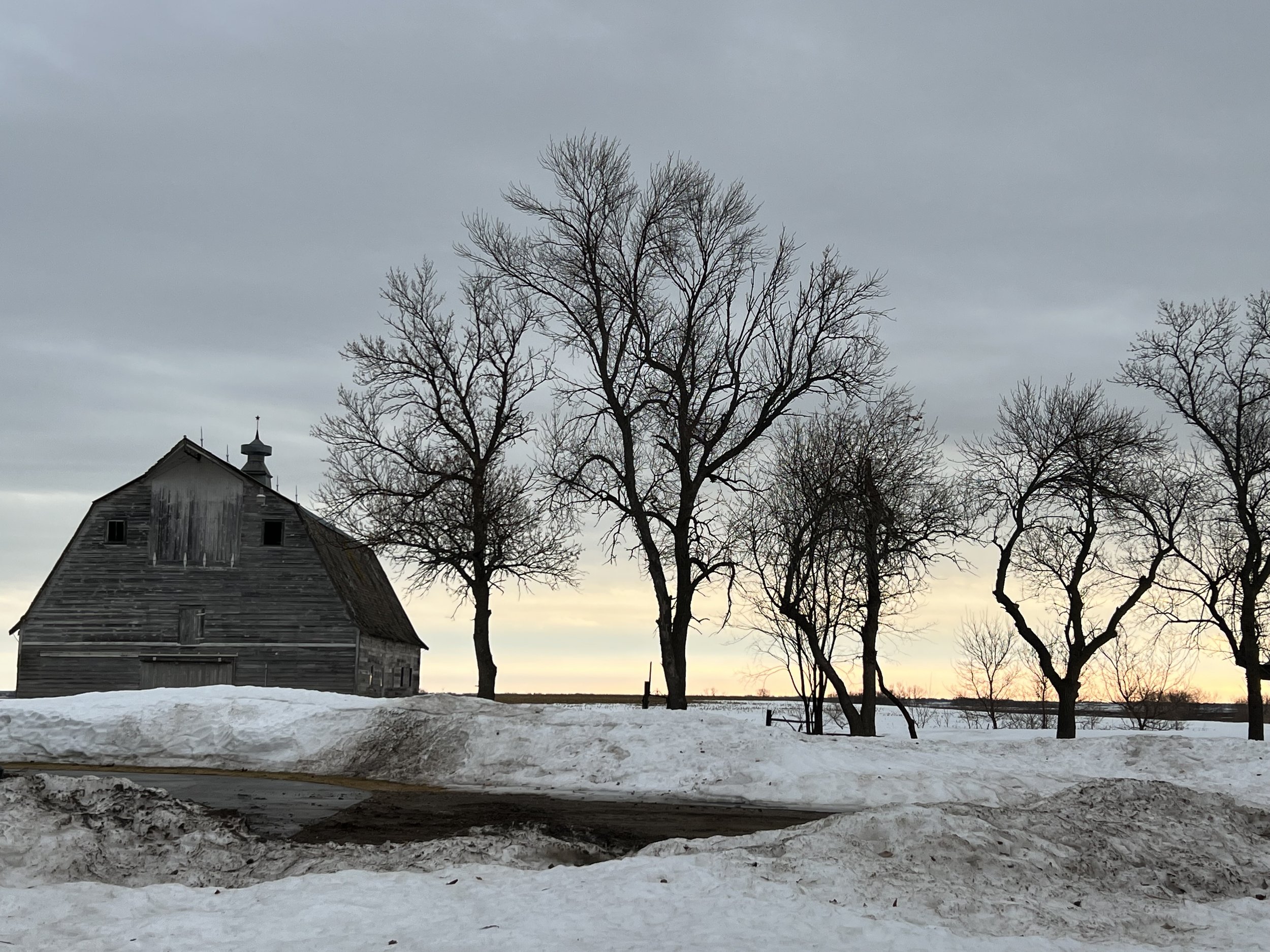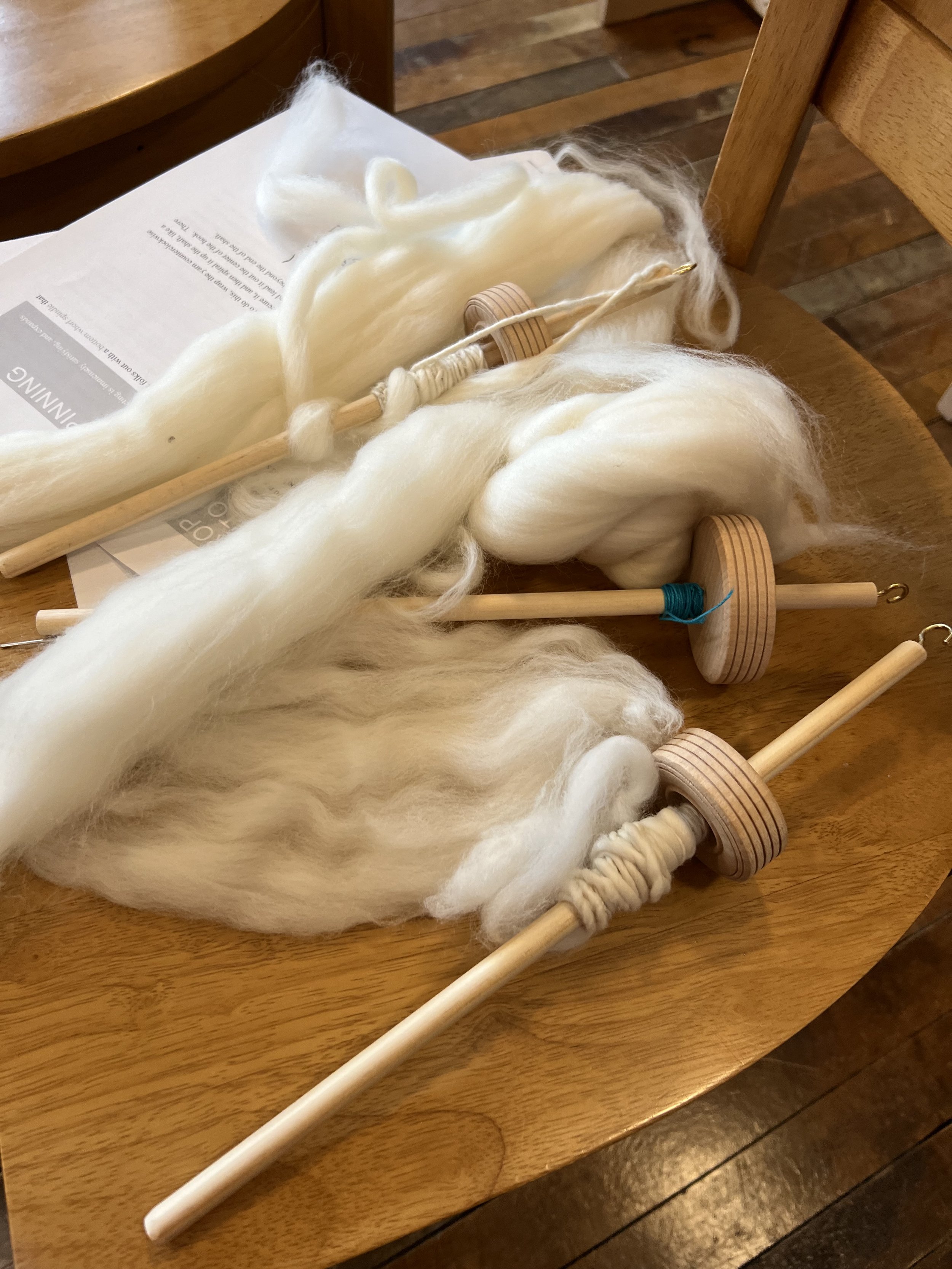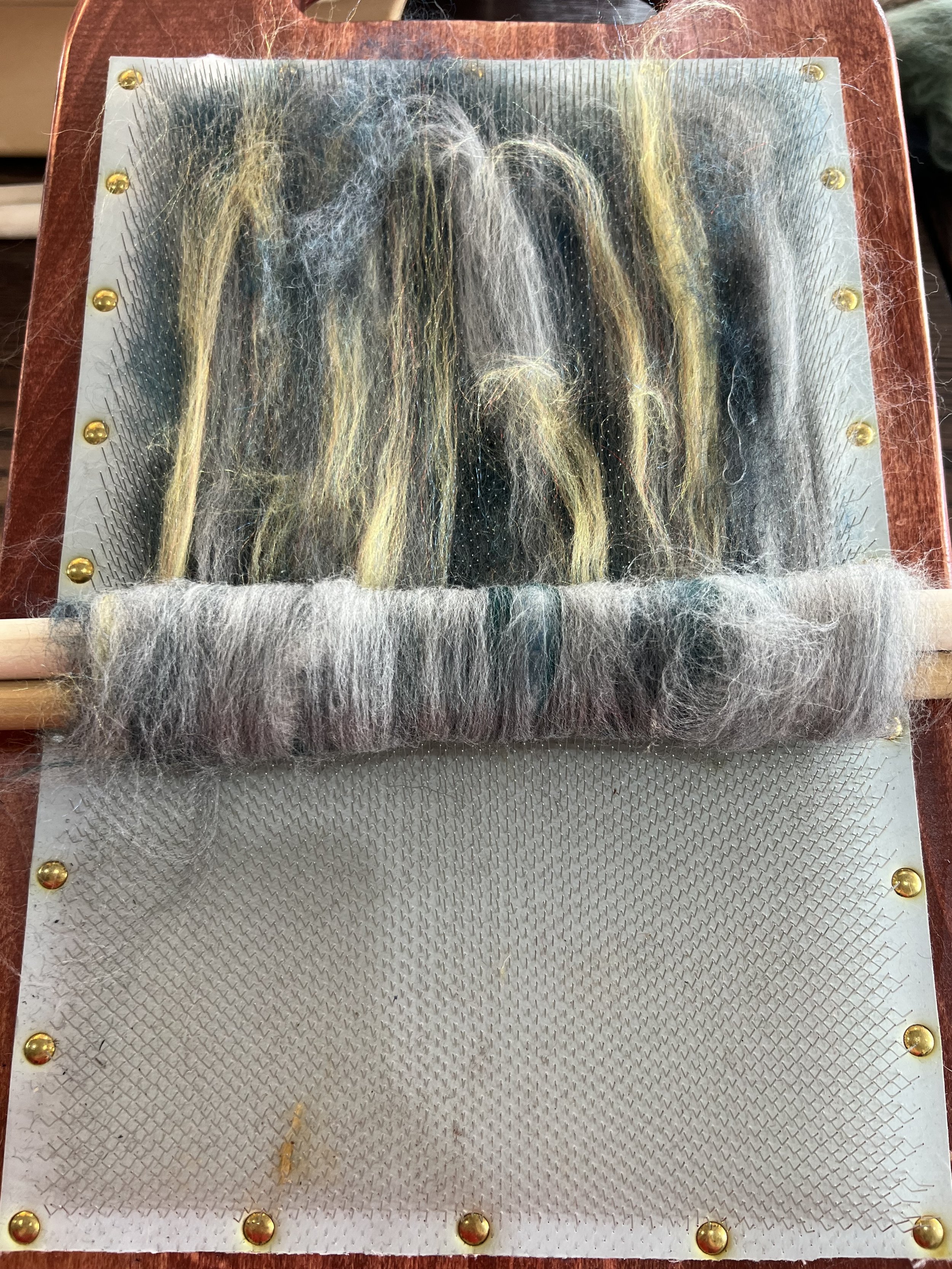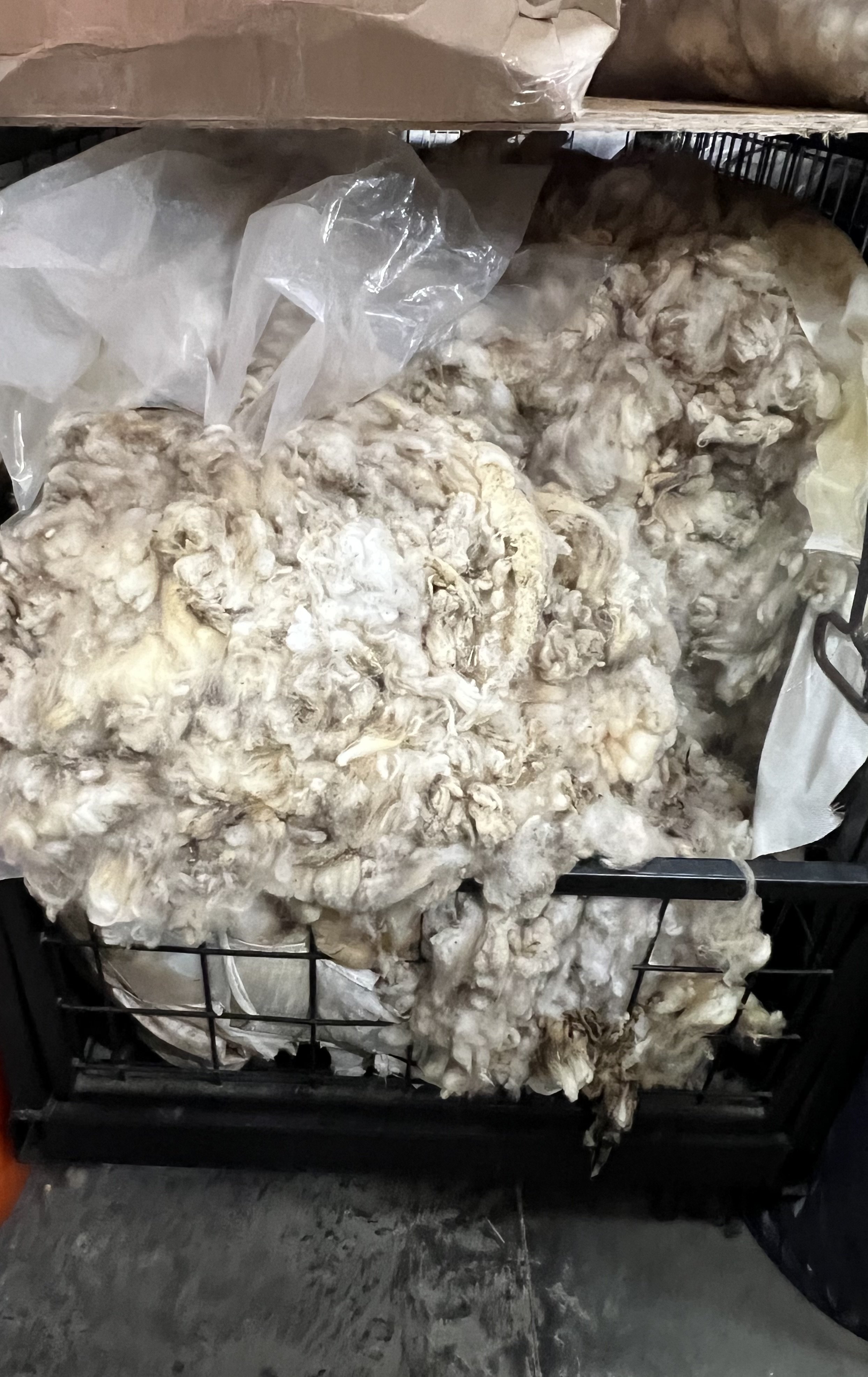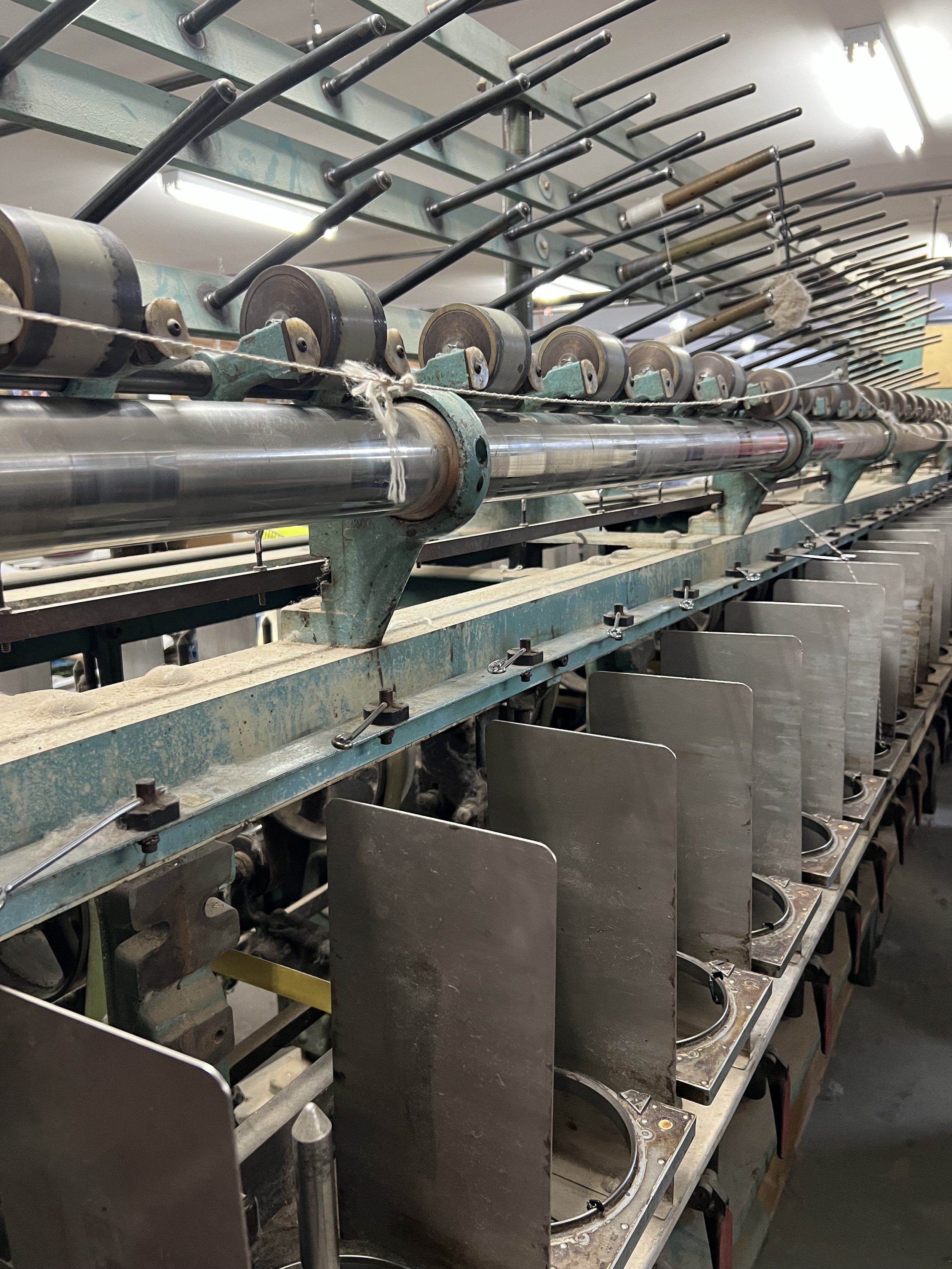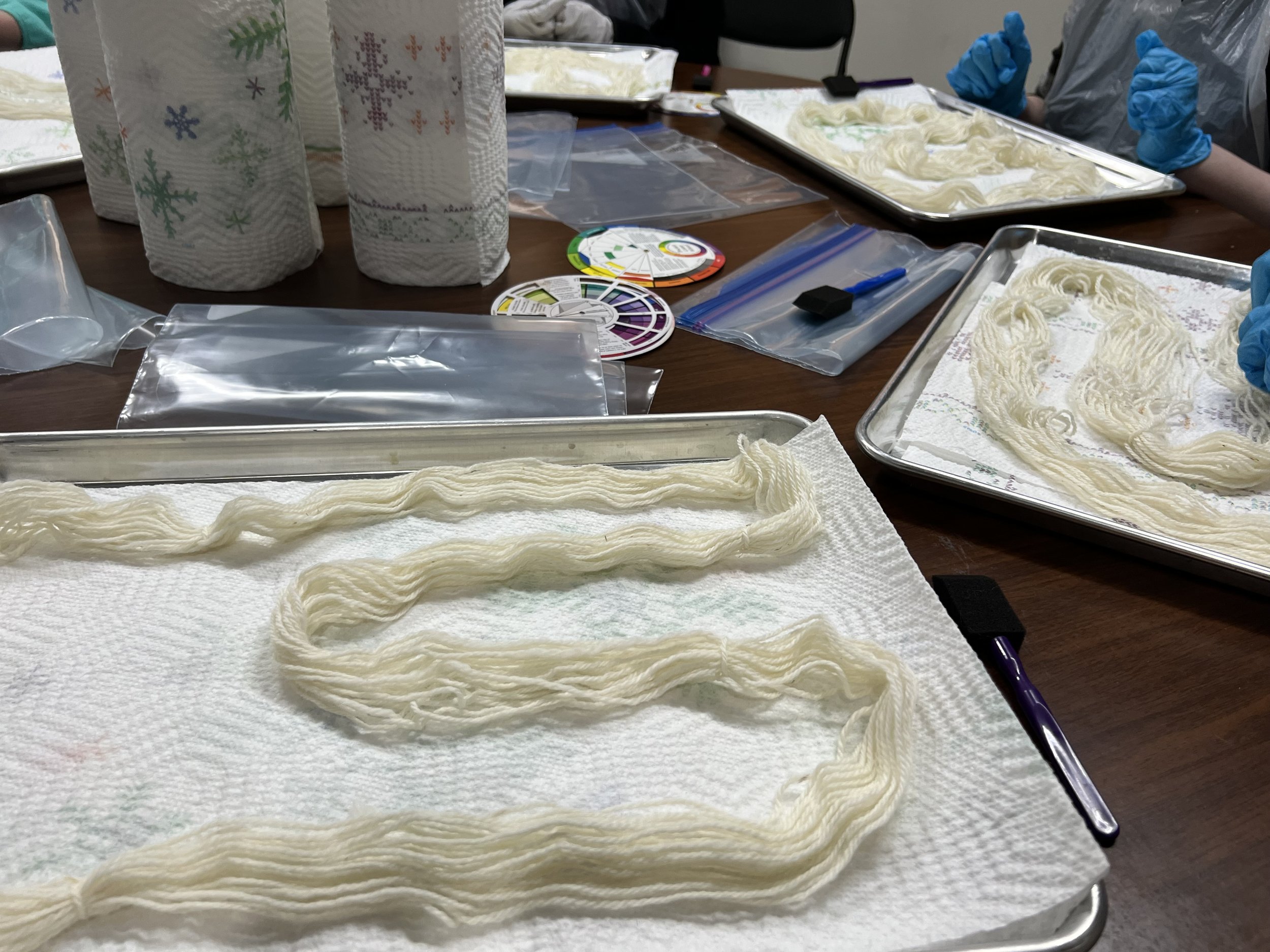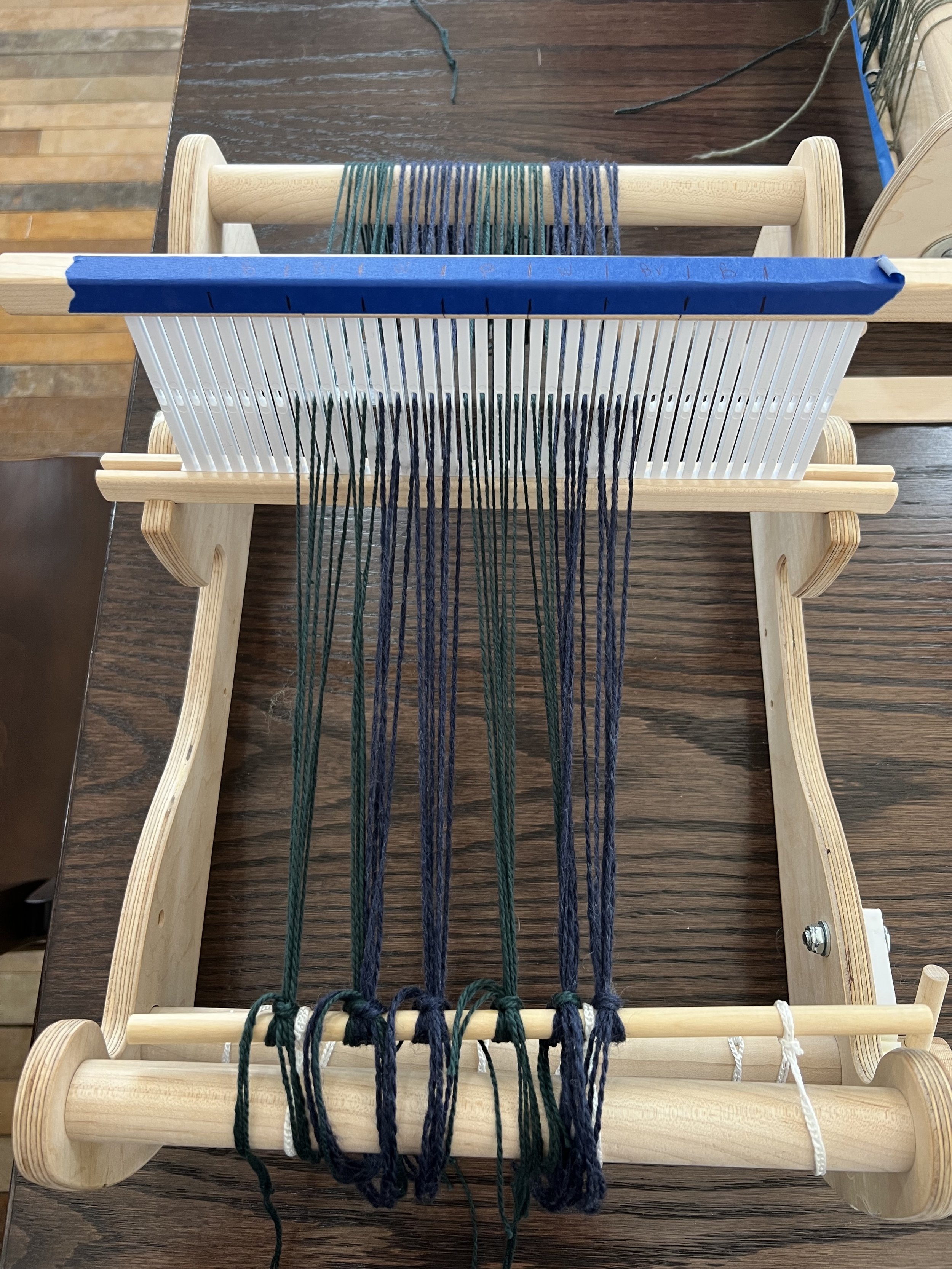Taste of Fiber Retreat - Nome, North Dakota
For the love of yarn and fiber….an exploration
As a self taught weaver, I feel like I’ve just entered an entire new world of color, texture, craft and process that I wanted to more fully understand and explore. There’s great joy in opening a box of jewel toned yarn and roving, yet what’s the process from sheep to loom? From farm to yarn (as they say at the Nome Schoolhouse). How might I enhance my woven wall hangings? What other fiber crafts might I enjoy?
So I set out on a journey to the Midwest’s partially snow covered and windy prairie lands, once roamed by bison and home to various indigenous tribes including the Lakota. I attended the Taste of Fiber Retreat at the Nome Schoolhouse in Nome, North Dakota, set in a 100 year old refurbished school that now houses North Dakota’s only cottage fiber mill, fiber arts classes, boutique hotel, restaurant and a gymnasium turned event center. The big barn out back will soon will be a home to a variety of sheep, alpaca, llama and other fiber providers. A perfect setting for learning and connecting with other fiber artists.
Day 1: Drop Spindle, Carding, Wet Felting and Fiber Mill Tour
Our lovely teachers for the weekend, sisters Julie and Jeanne, met our intimate group of twelve women in the History Room. We learned to spin yarn by using a drop spindle, a pre-spinning wheel invention that transforms fibers into yarn with a flick of your wrist, a pinch and glide. Sounds easy, looks ‘simple’ and with some repetition I eventually found my rhythm. The challenge is to make the yarn a consistent shape, if that’s what you’re looking for. I especially love chunky and random shaped yarn, which is what I inherently created.
Carding is a process of combining and straightening the fibers into your favorite color palette, a preparation for spinning. We experimented with a board carder and drum carder. I loved the board carder, like the drop spindle, it was a slow and intentional process.
When wool gets wet and you add friction it felts and creates a type of pliable fabric that can be shaped and used in a variety of ways from purses, saddle cushions, shoe insoles, bowls and other decorative shapes. This is called Wet Felting and was one of my favorite experiments!
Our tour of the fiber mill was amazing! The mill receives 100’s of pounds of fleece from local farmers which is carefully picked and sorted then washed and dried. From there it may be dyed, then carded and spun into yarn and sent back to the farmer. The mill has a felting machine which they designed and a team of college engineers created, plus specially shaped cutters to make coasters, etc. They also have a couple dozen needle felting kits they sell in their store and online. Every bit of leftover fuzz and scrap is used in one way or another, including felted scraps to put in the bottom of pots to help plants retain water. I really appreciated learning about all the steps wool goes through to make it to eventually make it to my loom.
Day 2: Spinning Wheel, Crochet, Dyeing Yarn
Aaahhh the spinning wheel, I have such romantic feelings about this beautiful tool. It speaks to the ancient homesteader in me, stirs up feelings of a slower time of life and the preciousness of yarn and fabric. Julie and Jeanne provided us with a multitude of wheels to play with, across four different brands, including an electric spinner. First practice spinning the wheel clockwise, keep it going at a slow and steady pace with either one foot or two. Then prep the roving, attach it to the leader on the bobbin and set the wheel in motion. As the yarn begins to twist, move your pinch up the fibers then feed it towards the bobbin. This tested my patience immensely! Coordinating my feet, the twist, the pinch, and feeding the twist more roving without it all untwisting when the wheel stopped initially felt like chasing butterflies. Each task has its own rhythm and it will certainly take some practice to sync it all up. Many deep breaths required and I look forward to trying this again sometime.
We received a crash course in crochet, complete with a new wood carved needle and our favorite color yarn. Chain, single crochet, double crochet, repeat in various patterns. I enjoyed this craft, another good option to take with me when I travel.
We spent the afternoon dyeing yarn, painting skeins with a rainbow of options. Once the yarn was the color I had in mind, it went into a ziplock bag and into the microwave to bring it close to 212 degrees, let it cool for an hour while the colors penetrate. Rinse, spin and air dry. This was a super creative process, reliant on the color wheel, intuition and experimentation.
Day 3: Rigid Heddle Weaving, Needle Felting
I typically use a frame loom, my growing collection of five looms provide me with a variety of sizes to weave upon. This was my first time weaving with a Rigid Heddle Table Loom, warping this loom was a two person task and quite a detailed process. It took longer to warp than it did to weave my little coaster! I enjoyed the rocking rhythm of sending the shuttle back and forth through the shed, the satisfaction of tapping down the weft string and the cute final product. This type of weaving feels very linear and precise, two words I would rarely use to describe my art yet I enjoyed expressing myself in a new way.
Needle Felting was quite fun, simple and a tiny bit dangerous. You take tufts of roving and put them into a cookie cutter, repeatedly plunge a barbed needle into the roving which creates friction and then felts the roving into that shape. Turn it over, add more roving and repeat. The Nome Schoolhouse sells a variety of needle felting kits where you can make super cute little animals. I liked making these adorable hearts and think they’d make sweet gifts.
Connection
It was such a full weekend of learning, crafting and exploration! One of my favorite highlights was simply chatting and laughing with other women while we were creating. As a weaver, I tend to create solo and was deeply struck by how much I enjoyed crafting within a circle of women. The ladies I shared this retreat with journeyed from California, Montana, Minnesota and North Dakota. I deeply appreciated hearing their stories, what they love to create and dream of creating. The team at the Nome Schoolhouse were genuine, generous and their passion for all they do spills out of them effortlessly.
The world of fiber arts is vast and playful, colorful and textured, simple and elaborate. There’s an open invitation to this welcoming creative environment, dip and dally or dive into a variety of pools of expression. I’m excited to get back into my studio and experiment with what I’ve learned!











